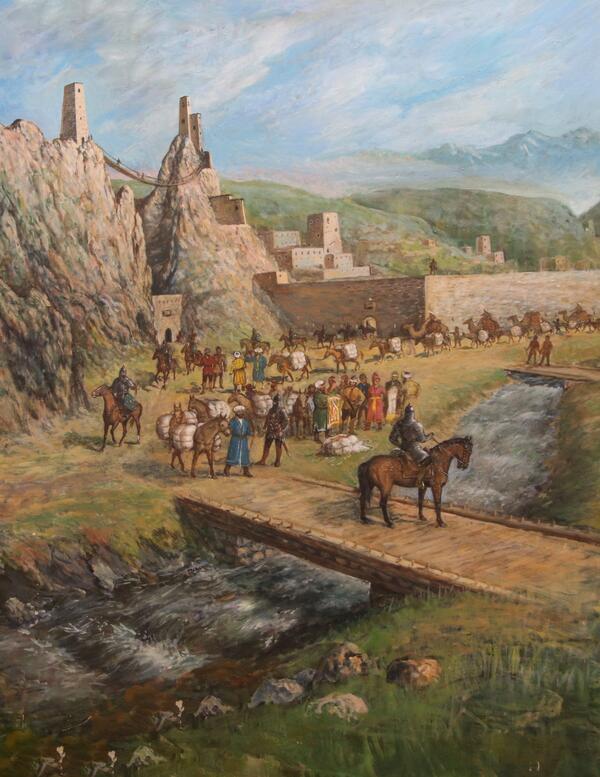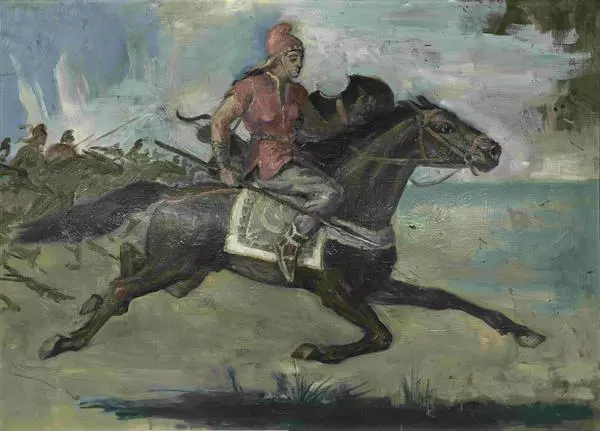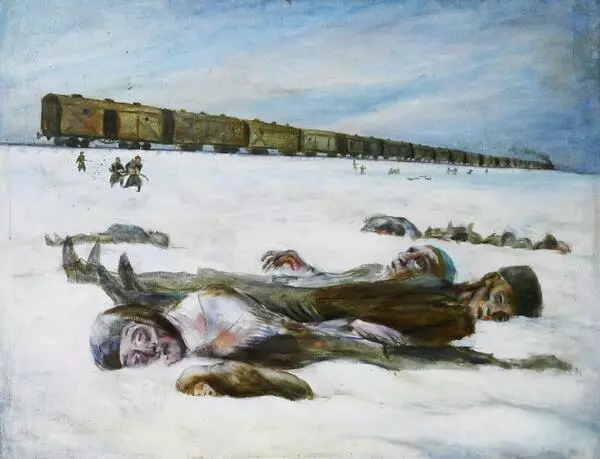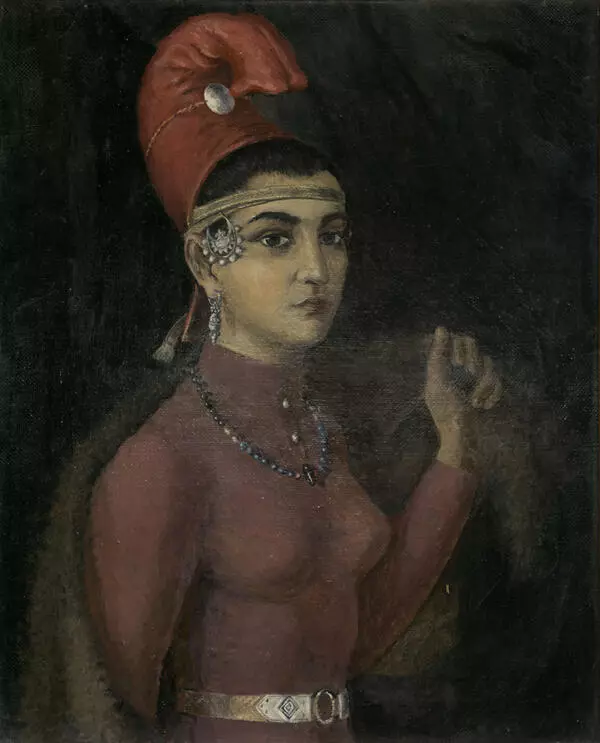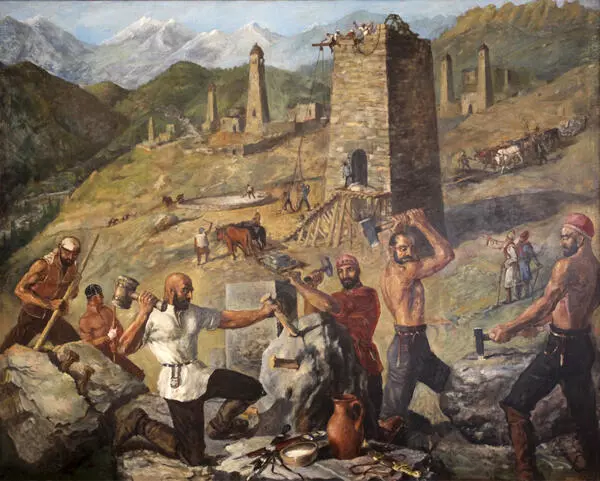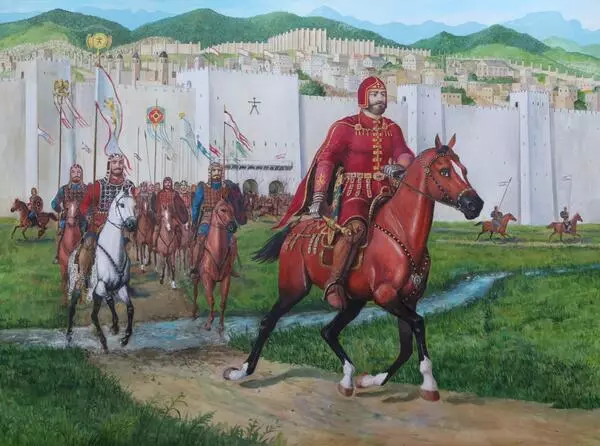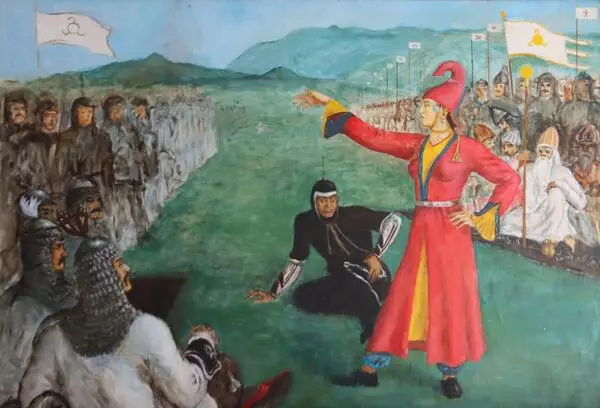In the painting ‘The Silk Road’, Khozh-Ahmed Imagozhev depicted a section of the Great Silk Road — the ancient trade route from China to Europe. For centuries, caravans loaded with valuable goods traveled along the many routes of the Silk Road. The Chinese brought silk, oil, and spices to the Europeans. In return, they received gold and silver, fur, leather, precious stones, and other valuable things.
The countries through which the Great Silk Road passed benefited a lot: not only could they trade with the merchants; they also were paid for protecting the caravans from robbers.
After the Steppe Route that went along the Northern Caspian Sea and the beginning of the Don ceased to function in the post-Hunnic period (by the end of the 5th century), trade with Europe mainly went across the Black Sea coast in the Northwest of the Caucasus. Since the 6th century, the Caucasus Mountain passes of the Silk Road became very important. They were called ‘Дари никъ’ (Dari nik) in the Ingush language, which can be translated as ‘The Routes of Silk’.
Fortified settlements appeared along the caravan route: there were more than 40 of them on the Ingush plains and the foothills. The walls were fortified with towers similar to those that were erected in the mountains, they only differed in materials: stone buildings could not be built on loose friable soil, that is why people had to use stone and turluk (wattle with clay) to build them.
The medieval cities Maghas and Dediakov were situated on this route. Maghas (Maas) was the capital city of Alania — a medieval kingdom that flourished in the Northern Caucasus from the early centuries AD up until the middle of the 14th century. The chronicles of many countries, including The Byzantine Empire, mentioned this prosperous city.
In the painting ‘The Silk Road’, Khozh-Ahmed Imagozhev depicted a caravan traveling along the defensive walls of Maghas. Alan military guards watch the traders.
The artist paid close attention to the uniform of the guards. They are portrayed with chain mails and battle helmets, which are called ‘цхьору’ (tshoru) and ‘сарки’ (sarki) in Ingush. The combat helmets of the Alans had a distinctive shape: they were either pointed (spiked) or streamlined. That allowed the soldiers to be very well protected from a sword, as the blade would simply slip off the metal.
Khozh-Ahmed Imagozhev created the painting ‘The Silk Road’ in 1999, and 2 years after that, it was acquired by the museum for the main collection.
The countries through which the Great Silk Road passed benefited a lot: not only could they trade with the merchants; they also were paid for protecting the caravans from robbers.
After the Steppe Route that went along the Northern Caspian Sea and the beginning of the Don ceased to function in the post-Hunnic period (by the end of the 5th century), trade with Europe mainly went across the Black Sea coast in the Northwest of the Caucasus. Since the 6th century, the Caucasus Mountain passes of the Silk Road became very important. They were called ‘Дари никъ’ (Dari nik) in the Ingush language, which can be translated as ‘The Routes of Silk’.
Fortified settlements appeared along the caravan route: there were more than 40 of them on the Ingush plains and the foothills. The walls were fortified with towers similar to those that were erected in the mountains, they only differed in materials: stone buildings could not be built on loose friable soil, that is why people had to use stone and turluk (wattle with clay) to build them.
The medieval cities Maghas and Dediakov were situated on this route. Maghas (Maas) was the capital city of Alania — a medieval kingdom that flourished in the Northern Caucasus from the early centuries AD up until the middle of the 14th century. The chronicles of many countries, including The Byzantine Empire, mentioned this prosperous city.
In the painting ‘The Silk Road’, Khozh-Ahmed Imagozhev depicted a caravan traveling along the defensive walls of Maghas. Alan military guards watch the traders.
The artist paid close attention to the uniform of the guards. They are portrayed with chain mails and battle helmets, which are called ‘цхьору’ (tshoru) and ‘сарки’ (sarki) in Ingush. The combat helmets of the Alans had a distinctive shape: they were either pointed (spiked) or streamlined. That allowed the soldiers to be very well protected from a sword, as the blade would simply slip off the metal.
Khozh-Ahmed Imagozhev created the painting ‘The Silk Road’ in 1999, and 2 years after that, it was acquired by the museum for the main collection.

